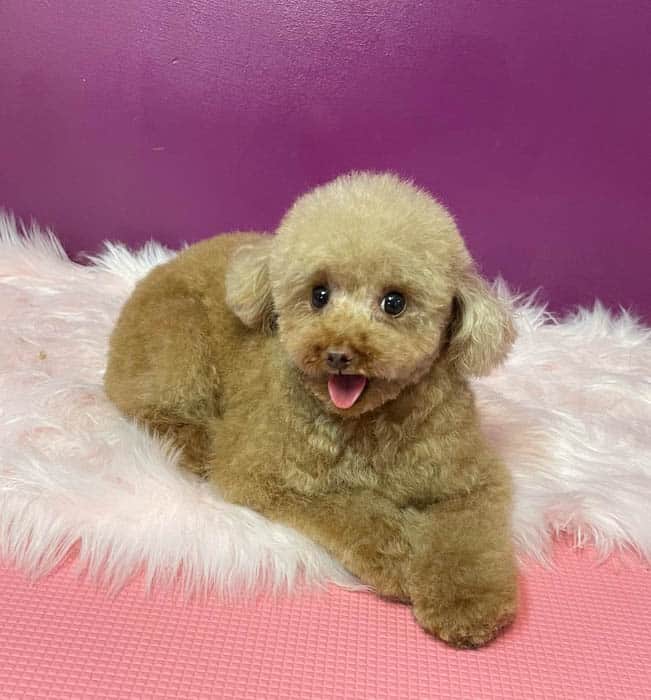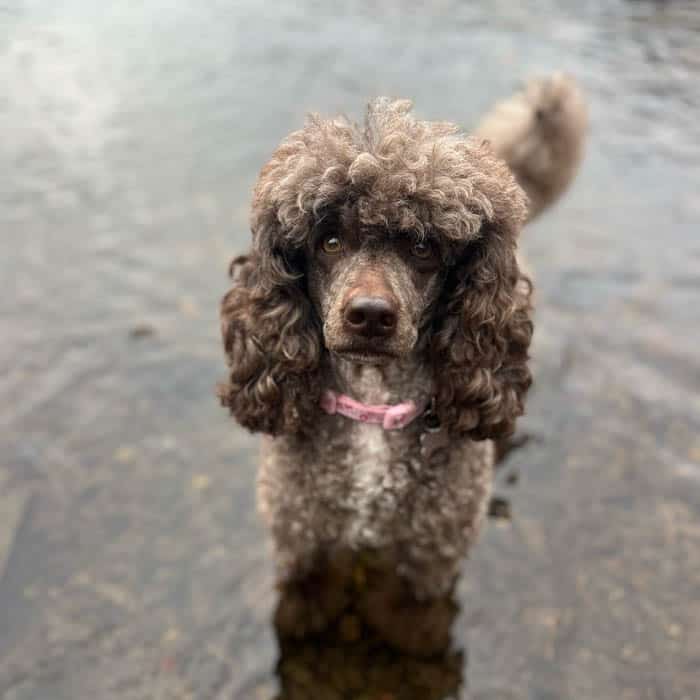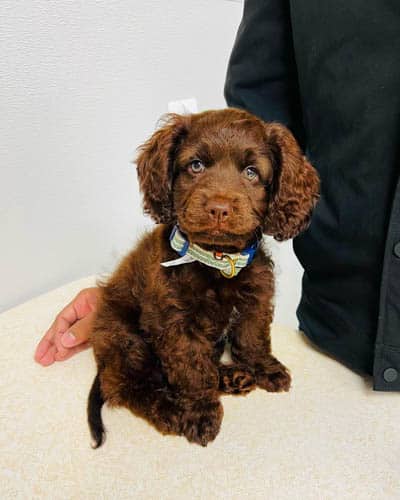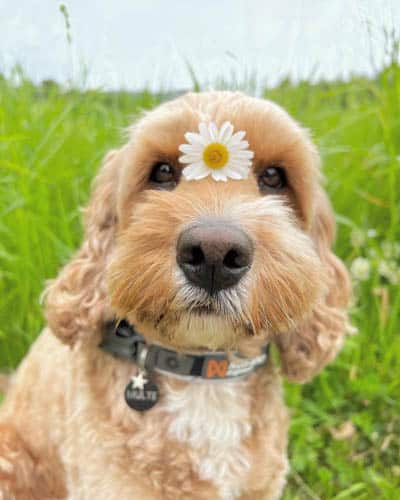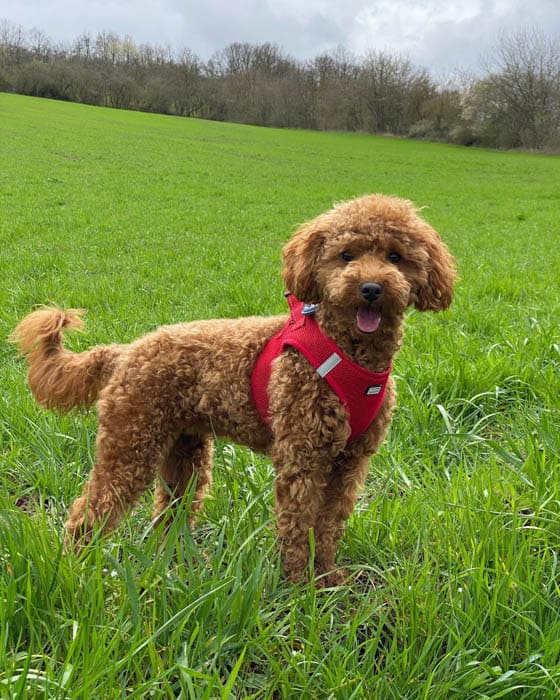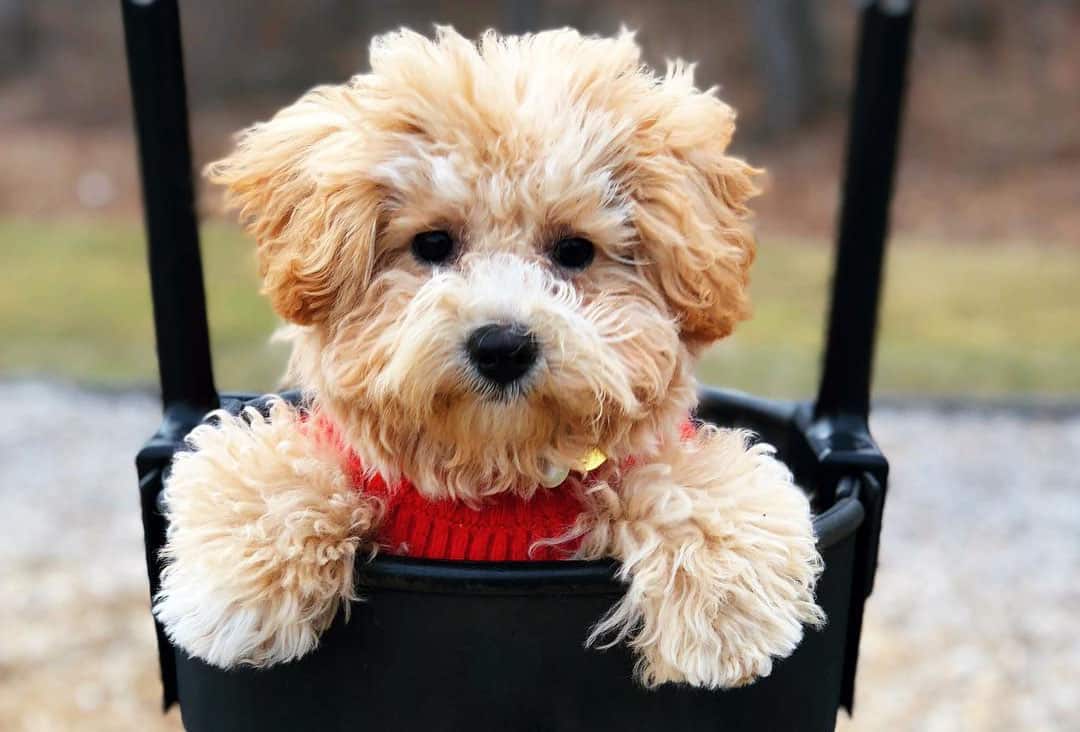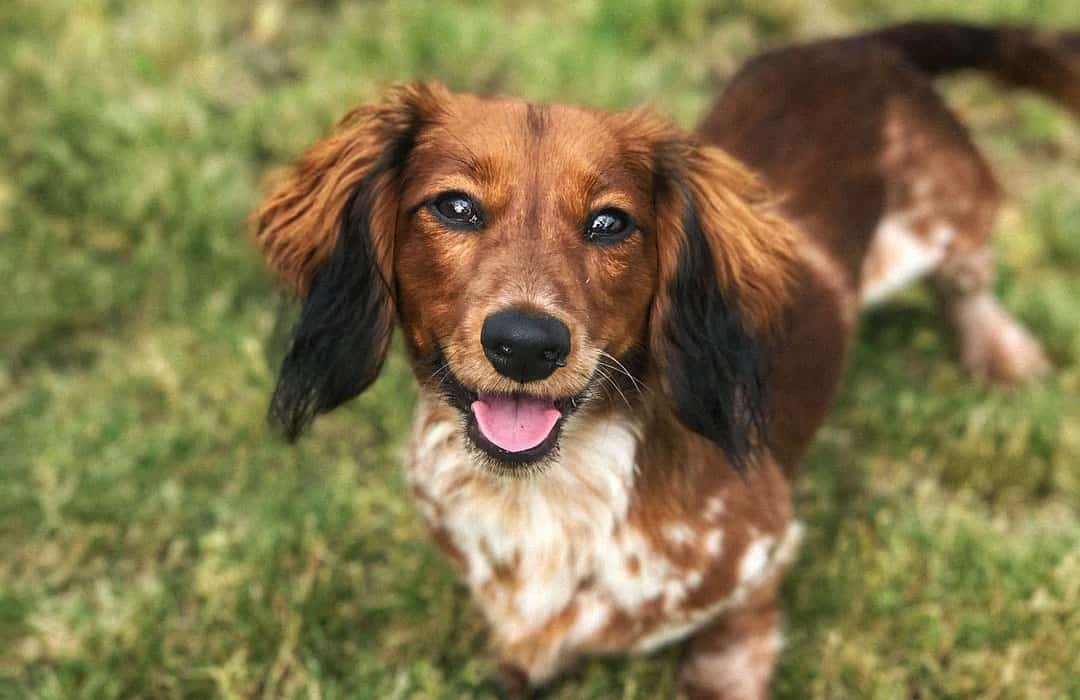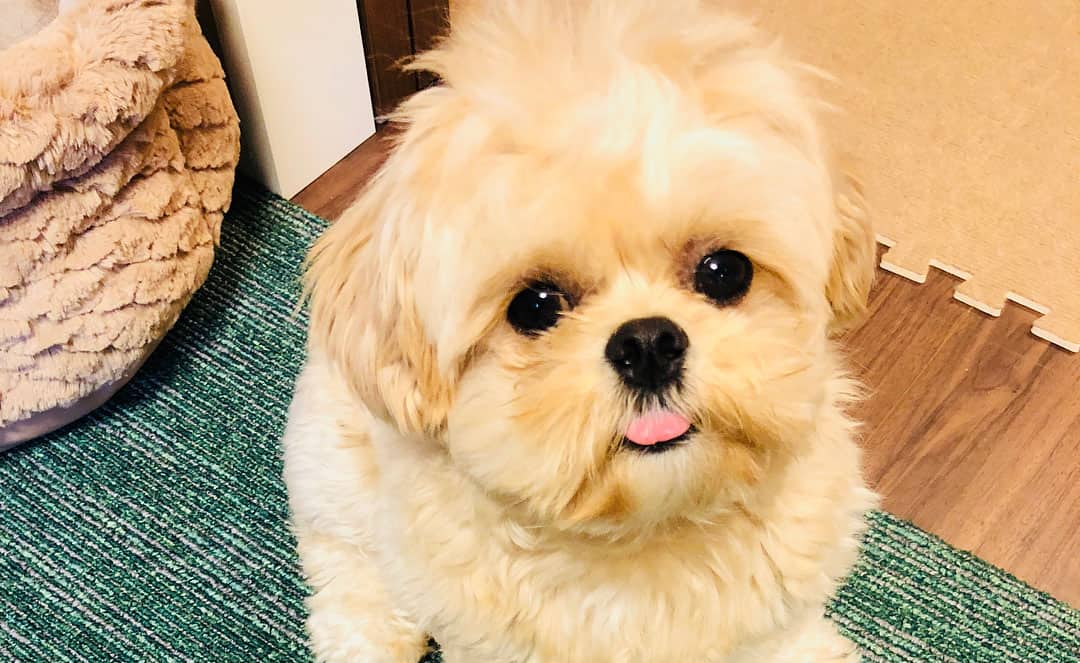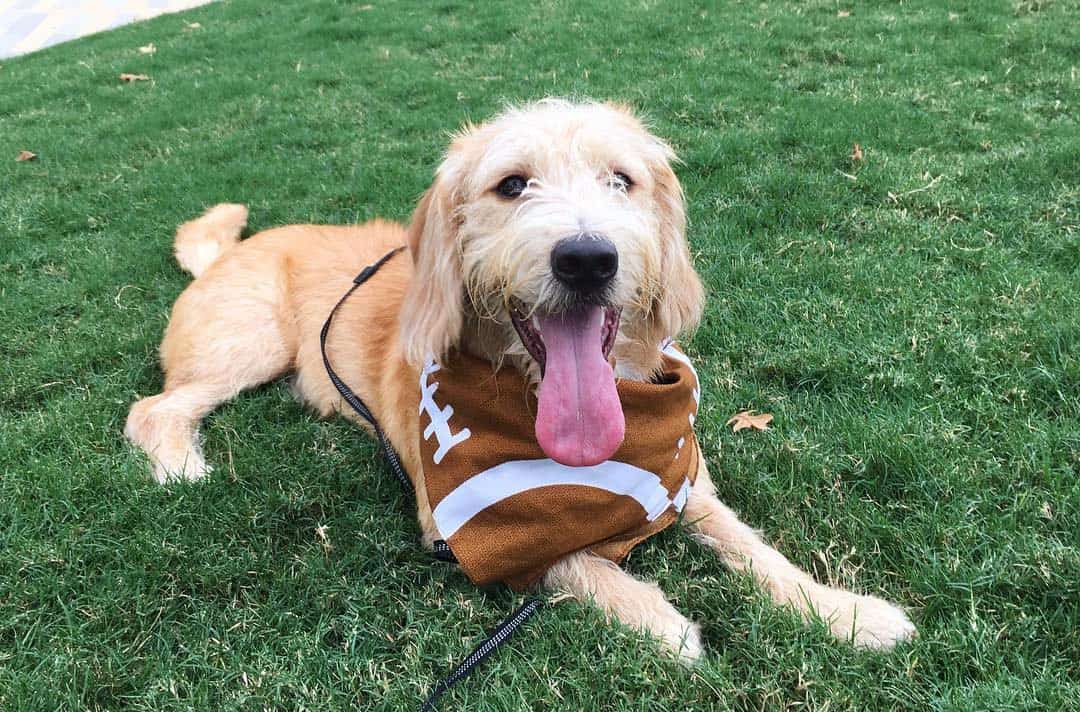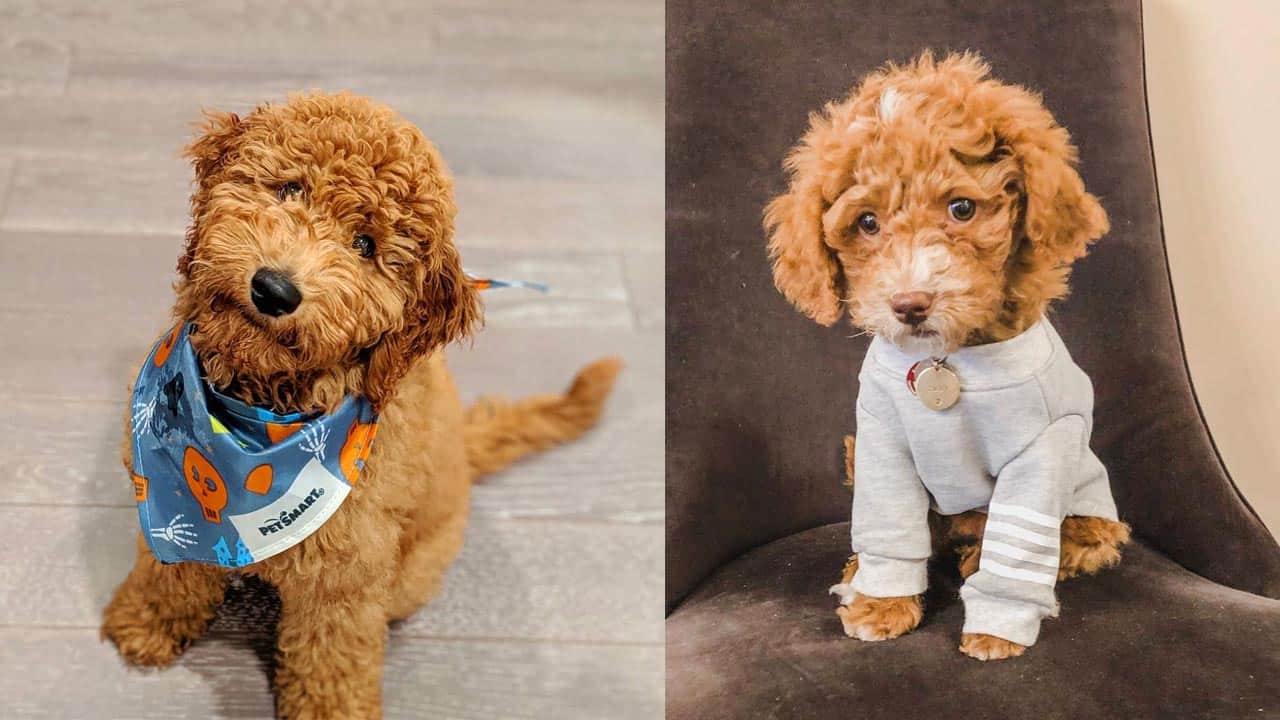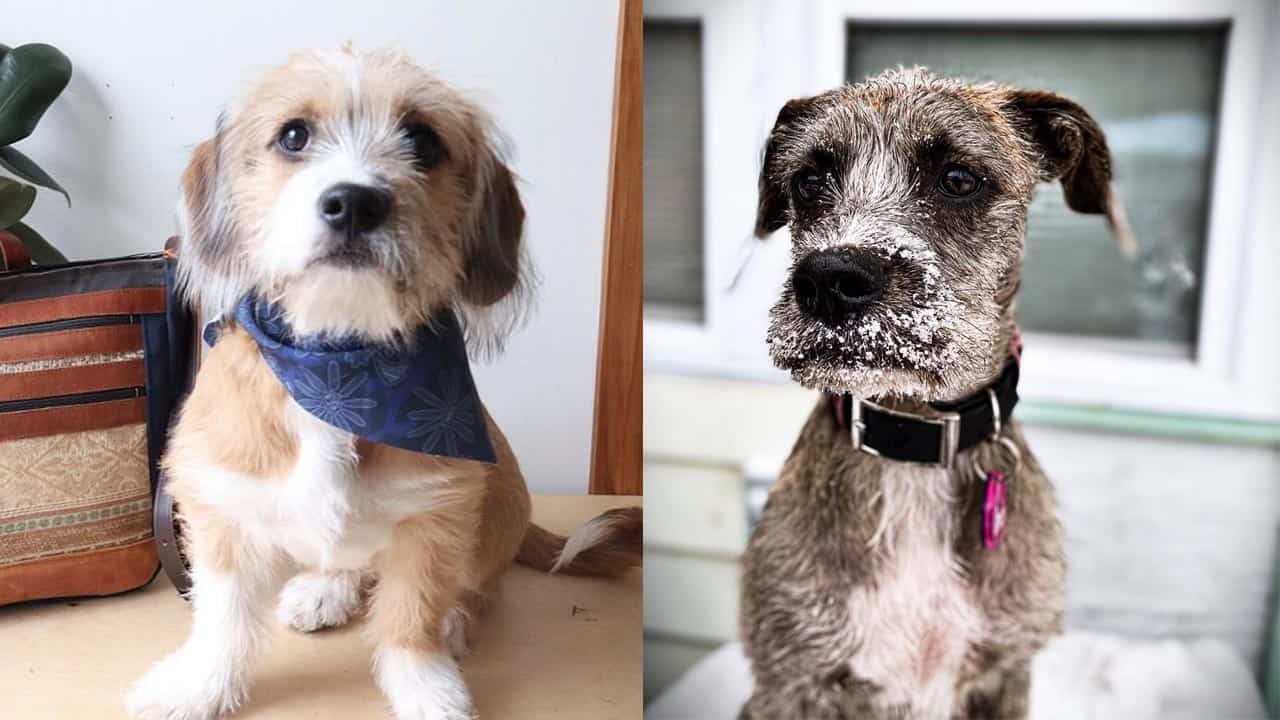Are you aware of what makes poodles one of the world’s most cherished and well-known dog breeds? Poodles are distinguished from other dog breeds by their distinctive coat, which is not fur or hair but something different. So, in this article, let’s know whether poodles have hair or fur. See this below.
Do Poodles Have Hair or Fur?
Instead of fur, poodles have hair. Poodles are one of a select few breeds that are thought to have hair, even though most dogs have fur. Poodles only have a single-layer coat that does not shed, and their hair can even adapt to hormonal changes in the body, like human hair.
There is no significant hair loss unless hormonal changes or underlying problems exist. Hair grows continuously. Only until a certain point does poodle fur develop; after that, it must shed. Poodle puppies have gorgeous heads (and bodies) covered in silky hair that can perform human functions.
Characteristics of Poodle Hair/Fur
Poodles differ from other breeds because they have a particular type of hair, not fur. Poodle hair is considered a form of coat, even though many people mistakenly refer to it as fur. There are two types of poodle coats: corded and clipped.
Always growing and made of tight curls, corded coats require frequent brushing to prevent tangling and should be manually corded every 6 to 8 weeks.
Since clipped coats are typically softer than corded ones, dogs can feel more comfortable wearing them in the summer. Their clipped coats can range in length from short to medium, depending on their owners’ style.
Differences Between Fur and Hair
You might initially wonder, “What’s the difference? I must still brush it. Everything functions the same, right? Well, kind of. Although the two have many subtleties and slight variations, hair and fur are fundamentally the same.
Through this scientific lens, we can compare the fur of other dog breeds to the hair of poodles and see that while both have similar characteristics, they differ from dog to dog and person to person.
Keratin, a protein-based material, is the building block of both hair and fur. Also, both are genetically identical. The two are more dissimilar from one another in terms of how they appear, feel, and how you treat them.
Fur and hair have very distinct textures from one another. Poodles and other dogs have only one layer of hair, but most dogs with fur have two layers.
Texture:
The smoother of the two is usually hair, which can also get longer. Hair can continue to grow as long as you let it; however, the fur must shed at particular lengths.
If you are not attentive and pay special attention to their grooming needs, your pet’s hair can easily become tangled, whether it is straight, curly, or wavy.
Dogs with fur have an undercoat and a top coat, which gives them a thick, furry appearance. The fur will almost usually be shorter and denser than the hair. This is because healthy hair growth requires more follicles on the skin.
Dogs often have a silky, fine undercoat of fur that aids in controlling body temperature in any season. Although they don’t always have it, most dogs with fur tend to have this double coat.
Growth Cycle Differences:
There is a big difference between the ways that hair and fur grow. Their growth cycles show why each has such unique looks and sensations, leading to various maintenance and care practices.
Poodle hair does have a longer growth cycle; however, because of this shorter cycle, there is little to no shedding. Although they progress through the same growth cycles at different rates, hair and fur do.
Poodle Hair, Fur, and Allergies
Unavoidably, the discussion of dog hair and fur leads to allergens. It’s a common misconception that dog hair reduces allergy symptoms, but it’s not simple.
It’s not necessarily the hair or fur that contains the allergies. A few more objects can potentially upset their owners and their families. They may consist of the following:
Various chemical substances in the skin
Poop from your dog
- Dander
- Saliva
- Dog’s coat covered in dust or pollen
Poodle Hair versus Dog Fur and Allergies
It is generally agreed that poodles are a better breed for persons with allergies because they have hair. However, the distinction between fur and hair is not always the reason. There are various perspectives on this.
Although a poodle doesn’t lose its hair, its curly puppy coat can readily trap allergens underneath it. Someone with dander-related allergies may experience some harm from dander accumulation just beneath that layer of hair. They must therefore be groomed frequently to allow the dander to escape and prevent buildups.
On the other hand, dog fur sheds often and collects dander as it circulates through the house. So, it is usually not from the extra fur around the house when your dog sheds a lot and your allergies worsen. Their sneezes and watery eyes are brought on by the dander and protein substances on their skin.
How to Care for a Poodle’s Hair/Fur
Poodles are renowned for having plush coats in a range of hues. While most people mistakenly believe that poodle hair resembles human hair, it is more like fur and needs special maintenance. Here are some tips on how to take care of your poodle’s hair/fur:
Routinely brush your poodle’s coat with a soft-bristled brush or comb for dogs with curly hair.
This will assist in getting rid of dead hair from the coat and lessen tangles and matting. Frequent brushing also contributes to the equilibrium of the skin’s natural oils, which maintains the coat looking lustrous and healthy.
Sometimes, but not too frequently, bathe your poodle to avoid drying out its skin and causing irritation or itching. Employ shampoo designed especially for dogs with curly coats; many shampoos have moisturizing components that assist in keeping their fur healthy. Make sure to completely rinse off all soap residue from the animal’s coat after bathing it to prevent future skin irritation.
Trimming a poodle’s overly long coat can be advantageous because it lessens matting and makes combing simpler, but only a professional should do this, as poor trimming could permanently harm your dog’s fur!
You can ensure your dog maintains a lovely appearance by practicing grooming techniques like routine brushing, occasional washing, and professional trimming.
Grooming Tips for Poodle Hair
All dogs require proper grooming. Poodles, however, will continue to grow and can become very long due to their hair coats. As a result, you must pay close attention to grooming if you own a Poodle.
If you don’t give your poodle enough grooming, they can’t stay healthy. Your poodle could get skin diseases if mats and tangles aren’t regularly checked for and avoided.
Best Hair Cuts For Poodles:
Undoubtedly, the poodle’s hair coat needs a lot of upkeep. You may care after your poodle’s coat in several ways. Poodle coat styles are known as clips (or cuts).
You’ll need a more official clip if you plan to enter your poodle in shows.
Poodles do not have fur; instead, they have hair. Whether you like a classic show look or something more contemporary will determine the cut and grooming options available. Here are some popular poodle grooming options and cuts:
The Continental Clip:
This elegant take on the oval clip leaves four tufts (or pompons) around each ankle and one at the end of each tail for extra fluff!
The Teddy Bear Cut:
This trendy modern style gives the majority of the body a much shorter cut for a cuddly teddy-bear appearance while leaving the hair around the face lengthy.
The Lamb Cut:
As the name suggests, this style gives your dog the appearance of being dressed as a sheep; all of their hair is left relatively short, with the exception of two long ears that trail behind them as they run!
The Oval Clip:
This traditional cut, which highlights the shape of the dog’s head by having longer hair on top that tapers down to short sides and back legs, is frequently seen in dog shows.
Brushing Tips
The poodle’s hair needs brushing with intense care. See below for the brushing tips.
- Stroke the skin with long, caressing strokes that stretch down. That action will boost circulation. Also, it aids in removing dander and any extra skin debris that needs to be cleaned up. With poodles, getting to the skin is crucial since their hair is prone to matting and tangling, which starts at the root.
- Poodles frequently use slicker brushes because they can readily reach the roots and help avoid matting. They have short, thin wires that are closely spaced and help pierce the curly hair.
- Always inspect your poodle for potential outside parasites, such as ticks or burrs.
- Establish a schedule with your poodle for daily brushing so they get used to it and start to like it. Poodles are naturally independent and stubborn dogs, so let them know you’re available to assist with this routine. Also, it will strengthen your relationship with them and keep them healthy.
Health Issues Related to a Poodle’s Coat
Poodles are renowned for their thick, plush coats, but if these distinctive characteristics are not properly taken care of, they can lead to health problems. The skin and hair of a poodle frequently become matted and have dry patches.
Another frequent problem is an overgrowth of the dog’s nails or fur between the pads of its feet, which can make the puppy’s walking challenging or uncomfortable. Frequent nail and paw fur cutting maintains comfort while keeping it tidy and clean!
Inadequate bathing and grooming can deplete the natural oils from the fur and lead to dry skin, itching, or flaking. Poodles should often be cleansed using a shampoo that won’t aggravate their sensitive skin to prevent dryness.
A Poodle’s coat can become home to parasites like ticks or fleas, so owners must keep an eye out for any signs of these creatures and apply frequent treatments to get rid of any issues before they get out of hand.
Daily brushing will maintain their coats clear of mats, which, if left untreated, could result in dangerous skin illnesses.
Alternatives for Maintaining Healthy Dog Hair/Fur:
It’s critical to consider natural alternatives while debating whether poodles have hair or fur to preserve healthy canine hair or fur.
Regular brushing or combing of your pet’s coat with a slicker brush, especially for dogs, is one such approach. This will assist in clearing their fur or hair of any dirt, debris, and dead strands.
Omega-3 fatty acids are good for your dog’s health since they have anti-inflammatory characteristics that help all dog breeds, including poodles, have better skin and shinier coats.
The best approach to keep a poodle looking immaculate is to groom and bathe it frequently using clippers, combs, and shampoo from a professional salon. But, there are some organic substitutes that might assist in maintaining the best-looking coat for your dog.
Giving your dog a weekly bath using gentle shampoo created especially for dogs is another excellent choice for maintaining the health of their coat.
This will help moisturize their skin while eliminating excess oils or odors on their fur and hair. Moreover, if you notice dry patches on your pet’s coat, give him or her an oatmeal bath to calm inflamed skin and leave behind silky hair.
Do Poodles Shed?
The luxurious double coat that many breeds have is not present in poodles. A single, dense coat of tightly curled hair covers poodles. It grows, and some hairs do fall out, just like human hair does.
Poodle coat hairs frequently fall back into the coat after falling out. As a result, a Poodle does not shed like other dogs do.
Do Poodles Get Winter Coats?
Breeds with fur coats for cold areas can develop thicker winter coats. The poodle doesn’t have a thick winter coat because it has a hair coat and wasn’t bred to live in cold climes.
Instead, Poodle hair grows at the same rate throughout the year. Do you reside in a frigid area where the winters are frosty? Avoid giving your poodle a cut that is too short.
To protect your dog from windy winds on winter walks, you want to make sure that it keeps as much of its fur as possible.
Poodles typically require their owners to purchase their adorable tiny winter coats for them to be comfortable during that time of year.
Conclusion:
So now you are aware! Instead of fur, poodle coats are composed of hair! A Poodle requires different care than the majority of other dog breeds, particularly those with fur coats.
This breed will continue to develop much longer than you would ever see with fur because it has hair. Poodles require far more time to groom than the majority of dogs with fur, so be aware of this before bringing home a new companion.
